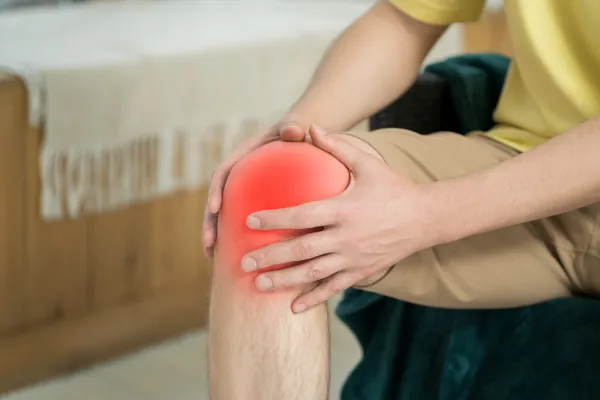
Knee Pain and Weak Muscles: Why Strengthening Is Key to Recovery
Knee pain is one of the most common complaints we see at the Oatley Physiotherapy Clinic. Whether it’s a result of a previous injury, overuse, or simply the natural ageing process, knee pain can significantly impact your ability to perform everyday activities. One often-overlooked cause of knee pain is weak muscles. Weakness in the muscles surrounding the knee can lead to instability, increased stress on the joint, and, ultimately, pain.
Understanding the link between weak muscles and knee pain is essential for addressing the root cause of the problem and working towards recovery. Let’s explore why strengthening is so important for knee pain relief and how physiotherapy can help you achieve it.
Why Weak Muscles Contribute to Knee Pain
The muscles surrounding the knee, particularly the quadriceps (front of the thigh), hamstrings (back of the thigh), calves, and hip stabilisers, all play a crucial role in maintaining the stability and function of the knee joint. When these muscles are weak, they can’t provide the necessary support to the knee, which increases the load on the joint. This imbalance leads to wear and tear on the cartilage and ligaments, which may result in pain, discomfort, and even long-term damage.
One of the most common scenarios we see in the clinic is when a patient’s quadriceps, the primary muscle group that supports knee movement, becomes weak. This can occur due to inactivity, an injury, or as part of the natural aging process. When the quadriceps aren’t working at their full potential, the knee joint bears more of the force during movement, leading to strain on the ligaments and joint, which can result in pain.
Another muscle group involved in knee pain is the hamstrings. The hamstrings work in conjunction with the quadriceps to help stabilise the knee joint. If they’re weak or imbalanced, the knee becomes more vulnerable to injury or pain, particularly when performing activities like running or walking uphill.
Finally, the muscles around the hip, including the gluteus medius, are often neglected when focusing on knee pain. These muscles are essential for stabilising the pelvis and controlling movement during walking and running. Weak hip muscles can lead to improper alignment and gait, which places added stress on the knee joint and can contribute to pain and discomfort.
How Weak Muscles Affect Your Daily Activities
When the muscles around the knee are weak, it can affect a wide range of activities. Even basic tasks like climbing stairs, getting up from a chair, or walking for an extended period can become difficult and painful. Sports activities that involve running, jumping, or quick direction changes may also become problematic.
For those with knee pain due to muscle weakness, it’s common to experience discomfort during the following activities:
Walking: Walking for longer periods can aggravate knee pain, especially if the muscles aren’t providing adequate support.
Climbing stairs: Weak quadriceps and hamstrings can make it challenging to lift the body during stair climbing.
Squatting: Performing squats, whether for daily activities or exercise, becomes more difficult when the knee muscles are not strong enough to support the movement.
Running or jumping: Sports or physical activities that require more dynamic movements put additional stress on the knee, causing pain if the surrounding muscles are weak or unconditioned.
How Strengthening Muscles Can Help with Knee Pain
The good news is that strengthening the muscles around the knee can significantly improve knee function and reduce pain. By increasing muscle strength, you can provide better support to the knee joint, improve its alignment, and reduce the load on the joint during physical activity. Here’s how strengthening the key muscle groups can benefit the knee:
Better Stability and Support: Strong muscles help stabilise the knee joint, preventing excessive movement and abnormal forces that can lead to pain and injury.
Reduced Stress on the Joint: Stronger muscles can absorb shock and distribute the load more evenly across the knee, reducing the stress placed on the joint.
Improved Mobility and Function: As the muscles around the knee become stronger, you’ll experience improved mobility, which allows you to perform daily tasks and engage in physical activity without pain.
Prevention of Further Injury: Strengthening muscles helps prevent future knee injuries by improving the stability and control of the knee during movement.
How Physiotherapy Can Help You Strengthen Your Knee Muscles
Physiotherapy is one of the most effective ways to address weak muscles and knee pain. At Oatley Physiotherapy Clinic, our experienced physiotherapists design personalised rehabilitation programs that target weak muscles and aim to strengthen the areas most affecting your knee pain. Here’s what you can expect from a physiotherapy session for knee pain:
Comprehensive Assessment: The physiotherapist will assess your knee joint, muscles, and movement patterns to identify any weaknesses, imbalances, or alignment issues contributing to your pain.
Individualised Strengthening Program: Based on the assessment, the physiotherapist will create a tailored strength training program that focuses on improving muscle strength around the knee, particularly the quadriceps, hamstrings, calves, and hip muscles.
Functional Exercises: In addition to strengthening exercises, functional exercises will be included to improve your ability to perform everyday activities, such as walking, squatting, and climbing stairs.
Manual Therapy: Physiotherapists may also use manual therapy techniques, such as massage and joint mobilisation, to reduce muscle tightness and improve joint mobility.
Education and Injury Prevention: The physiotherapist will educate you on proper movement patterns and posture to avoid placing unnecessary strain on your knees. They’ll also provide advice on injury prevention to avoid future knee problems.
Conclusion: Strengthen Your Way to Recovery
If knee pain is affecting your ability to perform daily activities or enjoy your favourite sports, strengthening the muscles around your knee can make a world of difference. By addressing muscle weakness, improving joint stability, and reducing stress on the knee, physiotherapy can help you regain function, reduce pain, and prevent further injuries.
At Take Control Active Rehab, our team of skilled physiotherapists is dedicated to providing personalised care to help you achieve long-term relief from knee pain. If you’re ready to take control of your recovery and start strengthening your way to better knee health, don’t hesitate to contact us for an assessment and tailored treatment plan.



